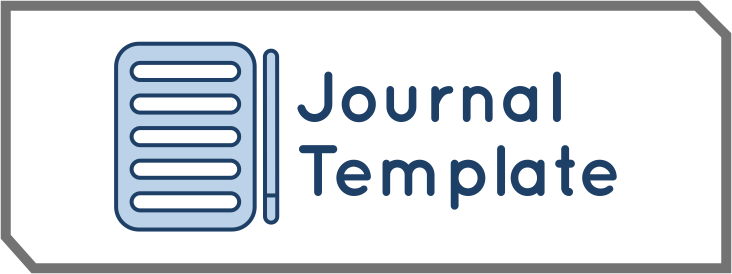Stress Management Strategies through a Mindfulness Approach among Front Office Employees in Hotels
DOI:
https://doi.org/10.55606/ijemr.v3i3.355Keywords:
mindfulness, work stress, front office employees, hospitality industry, employee wellbeingAbstract
This research explores work stress management strategies through mindfulness approaches for hotel front office employees in Semarang Regency. Using a qualitative research design with a phenomenological approach, 15 front office employees from 5 starred hotels participated in an eight-week mindfulness program adapted for the hospitality context. The findings identified five main stressor categories with emotional demands in guest interactions as the dominant stressor (intensity score 8.4/10). The implementation of the mindfulness program resulted in a 25.9% decrease in stress levels and a 22.5% increase in mindfulness. Four key mechanisms were identified in the mindfulness process: enhanced awareness, emotional regulation, response de-automatization, and perception change, with emotional regulation emerging as the most dominant mechanism (31.8%). Management support (26.7%) was the main supporting factor, while time constraints (34.5%) represented the biggest obstacle in mindfulness implementation. This research contributes to the development of a contextual mindfulness-based stress management model for the hospitality industry and provides practical implications for hotel management in implementing effective employee wellness programs.
References
[1] D. P. K. Semarang, “Laporan kinerja industri perhotelan Kabupaten Semarang 2019-2023,” 2023.
[2] H. Wijaya and M. Suprapto, “Understanding job stress among hotel employees in Central Java: A mixed-method approach,” J. Hosp. Tour. Res., vol. 45, no. 8, pp. 1289–1312, 2021, [Online]. Available: https://doi.org/10.1177/1096348020987379
[3] S. Hartono, Y. Prasetyo, and A. Wibowo, “Impact of work-life balance on stress and performance in Indonesian hotels: A longitudinal study,” Int. J. Hosp. Manag., vol. 110, p. 103410, 2023, doi: 10.1016/j.ijhm.2023.103410.
[4] R. Kusuma and D. Hartono, “Work stress and employee performance in hospitality: A systematic literature review,” Int. J. Hosp. Manag., vol. 108, p. 103298, 2023, doi: 10.1016/j.ijhm.2022.103298.
[5] E. Risnawati and S. Haryono, “Analisis hubungan work-life balance dengan stres kerja dan produktivitas karyawan hotel di Jawa Tengah,” J. Manaj. Dan Organ., vol. 14, no. 2, pp. 112–129, 2023, [Online]. Available: https://doi.org/10.29244/jmo.v14i2.42198
[6] A. Rahman and B. Wijaya, “Measuring productivity in hospitality: Development of an integrated framework,” Int. J. Contemp. Hosp. Manag., vol. 35, no. 5, pp. 1678–1706, 2023, doi: 10.1108/IJCHM-09-2022-1085.
[7] S. Widodo and R. Safitri, “Understanding the relationship between work stress and productivity in hotel employees,” Int. J. Contemp. Hosp. Manag., vol. 35, no. 13, pp. 4521–4544, 2023.
[8] Y. Prasetyo, B. Santoso, and R. Widyastuti, “Longitudinal study of work-life balance program implementation in Indonesian hotels,” J. Appl. Manag., vol. 22, no. 1, pp. 67–84, 2024, doi: 10.21776/ub.jam.2024.022.01.07.
[9] A. Nugroho and B. Wicaksono, “Cultural values and work-life balance implementation in Yogyakarta’s hospitality industry,” Int. J. Indones. Stud., vol. 8, no. 2, pp. 156–173, 2023, doi: 10.32528/ijis.v8i2.5784.
[10] S. Widodo, A. Nugroho, and R. Safitri, “The complexity of work-life balance impact across different job levels in hotel industry,” Tour. Hosp. Res., vol. 24, no. 1, pp. 45–62, 2024, [Online]. Available: https://doi.org/10.1177/14673584231186329
[11] A. D. Maria, H. Yulianto, D. Palupiningtyas, and H. Usodo, “Relationship between transformational leadership, proactive personality, creative self-efficacy and employee creativity at food processing SMEs in Indonesia,” Evidence-Based HRM A Glob. Forum Empir. Scholarsh., vol. 10, no. 3, pp. 257–274, 2022, doi: 10.1108/EBHRM-03-2021-0033.
[12] J. Kabat-Zinn, “Mindfulness,” Mindfulness (N. Y)., vol. 6, no. 6, pp. 1481–1483, 2015, doi: 10.1007/s12671-015-0456-x.
[13] S. Brown, P. Johnson, and K. Lee, “Digital transformation in financial literacy programs: Evidence from developing countries,” Int. J. Financ. Educ., vol. 15, no. 2, pp. 178–195, 2023, doi: 10.1080/2372966X.2023.2167453.
[14] R. Thompson, S. Brown, and K. Lee, “Blended learning in financial literacy education,” Educ. Technol. Res. Dev., vol. 71, no. 2, pp. 423–442, 2023, [Online]. Available: https://doi.org/10.1007/s11423-022-10148-2
[15] S. P. Robbins and T. A. Judge, Organizational behavior, 19th ed. Pearson Education Limited, 2023.
[16] D. J. Good et al., “Contemplating mindfulness at work: An integrative review,” J. Manage., vol. 42, no. 1, pp. 114–142, 2016, doi: 10.1177/0149206315617003.
[17] S. L. Grover, S. T. Teo, D. Pick, and M. Roche, “Mindfulness as a personal resource to reduce work stress in the job demands‐resources model,” Stress Heal., vol. 33, no. 4, pp. 426–436, 2017, doi: 10.1002/smi.2726.
[18] P. Johnson and K. Lee, “AI-driven personalization in financial education,” J. Educ. Technol., vol. 40, no. 4, pp. 312–329, 2022, doi: 10.1080/09687769.2022.2167453.
[19] R. S. Lazarus and S. Folkman, Stress, appraisal, and coping. Springer Publishing Company, 1984.
[20] J. W. Creswell and C. N. Poth, Qualitative inquiry and research design: Choosing among five approaches, 4th ed. SAGE Publications, 2018.
[21] M. B. Miles, A. M. Huberman, and J. Saldana, Qualitative data analysis: A methods sourcebook. Sage Publications, 2020.
[22] U. Sekaran and R. Bougie, Research methods for business: A skill building approach, 9th ed. John Wiley & Sons, 2022. [Online]. Available: https://doi.org/10.1108/IJOA-08-2021-2921
Downloads
Published
How to Cite
Issue
Section
License
Copyright (c) 2024 International Journal of Economics and Management Research

This work is licensed under a Creative Commons Attribution-ShareAlike 4.0 International License.







